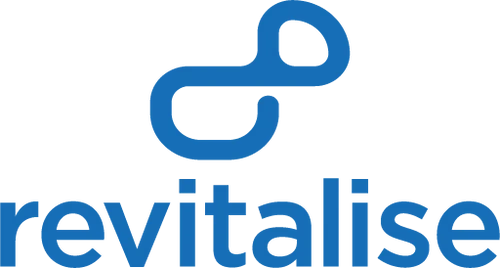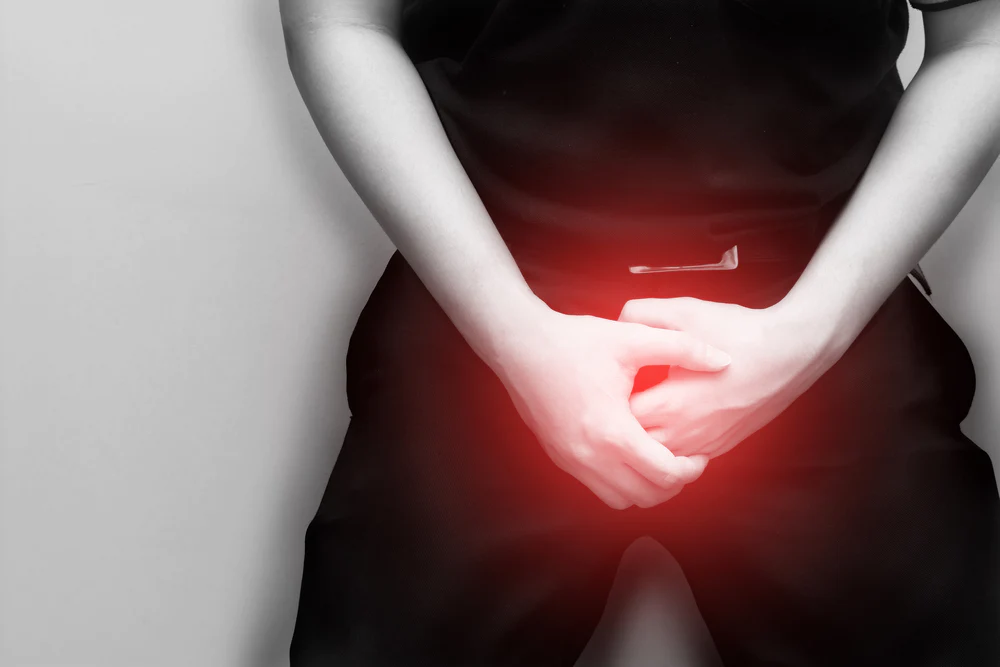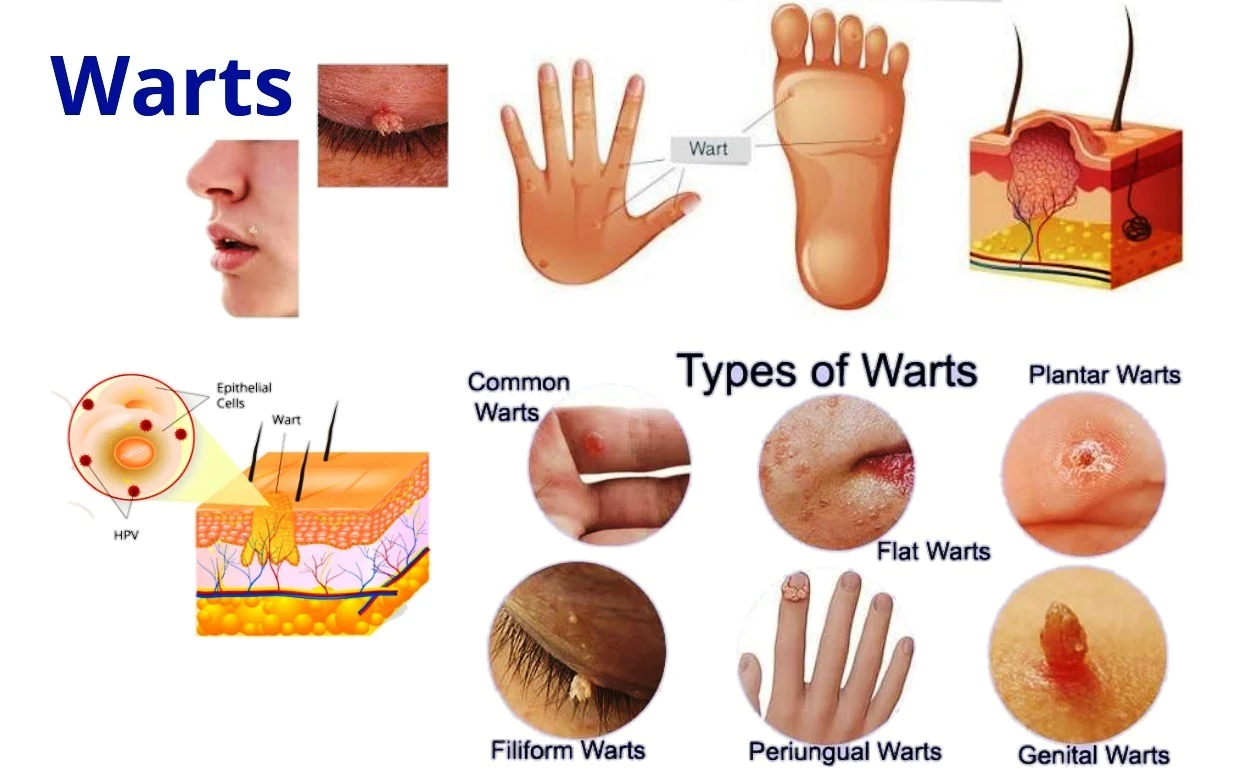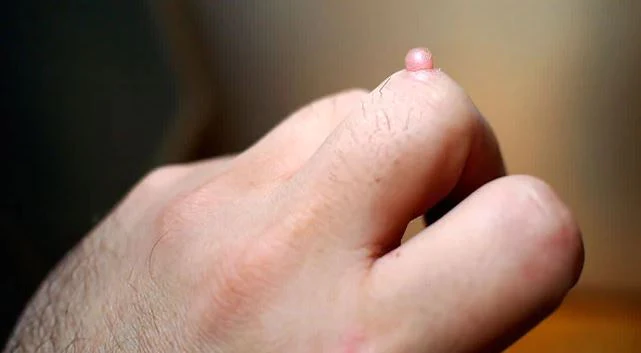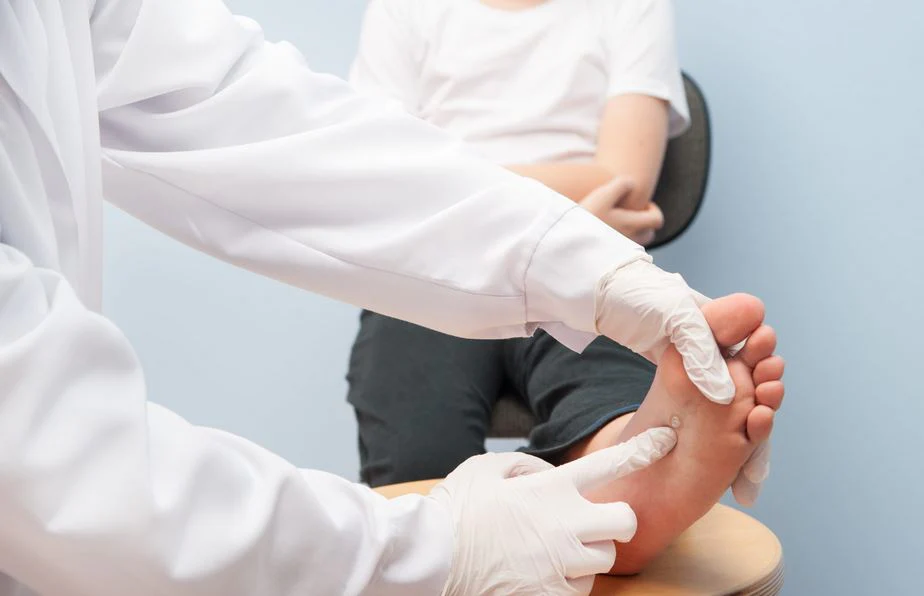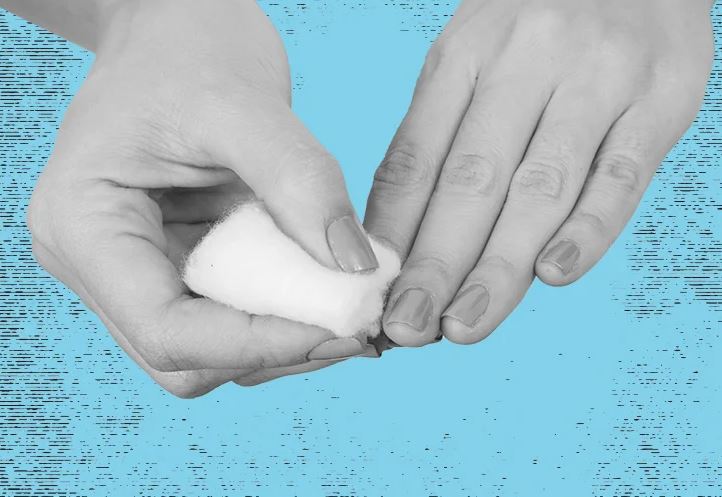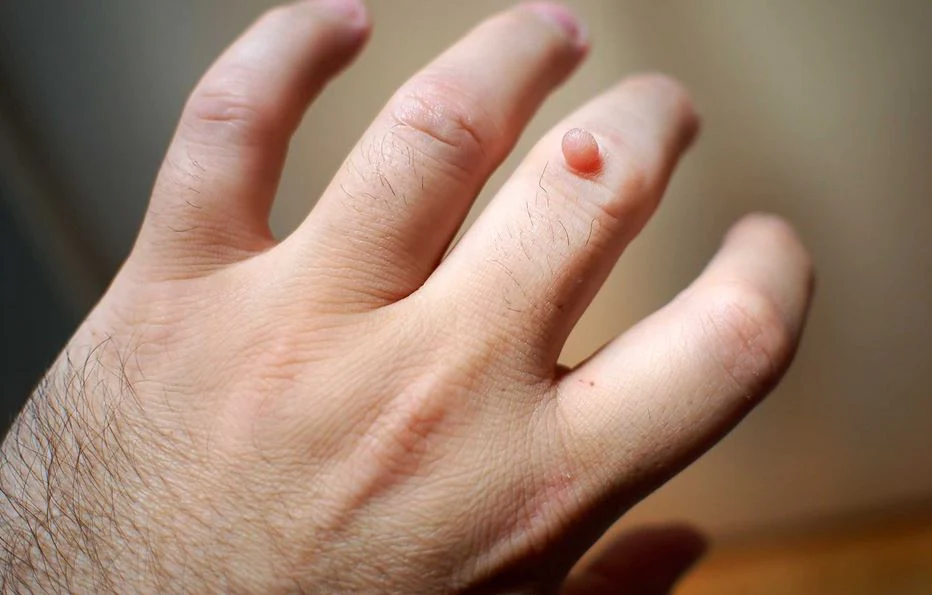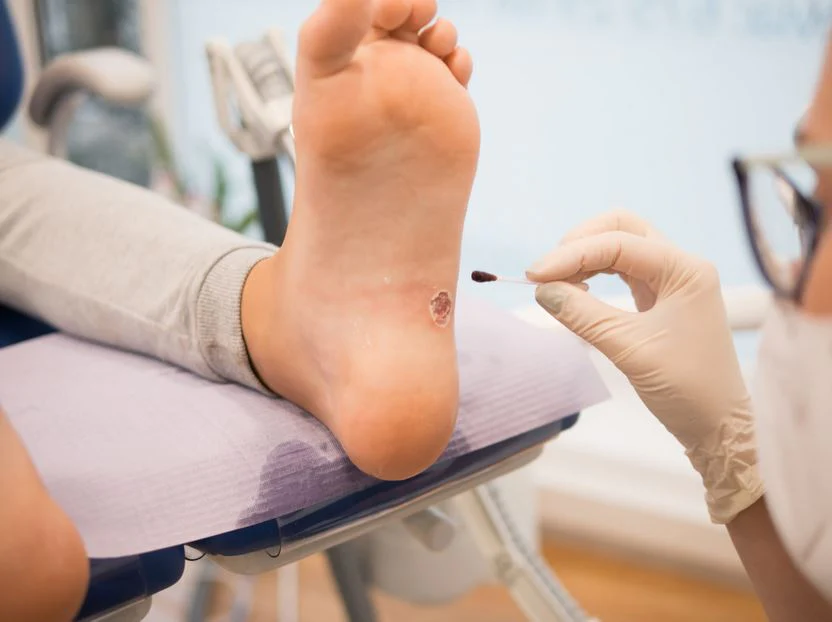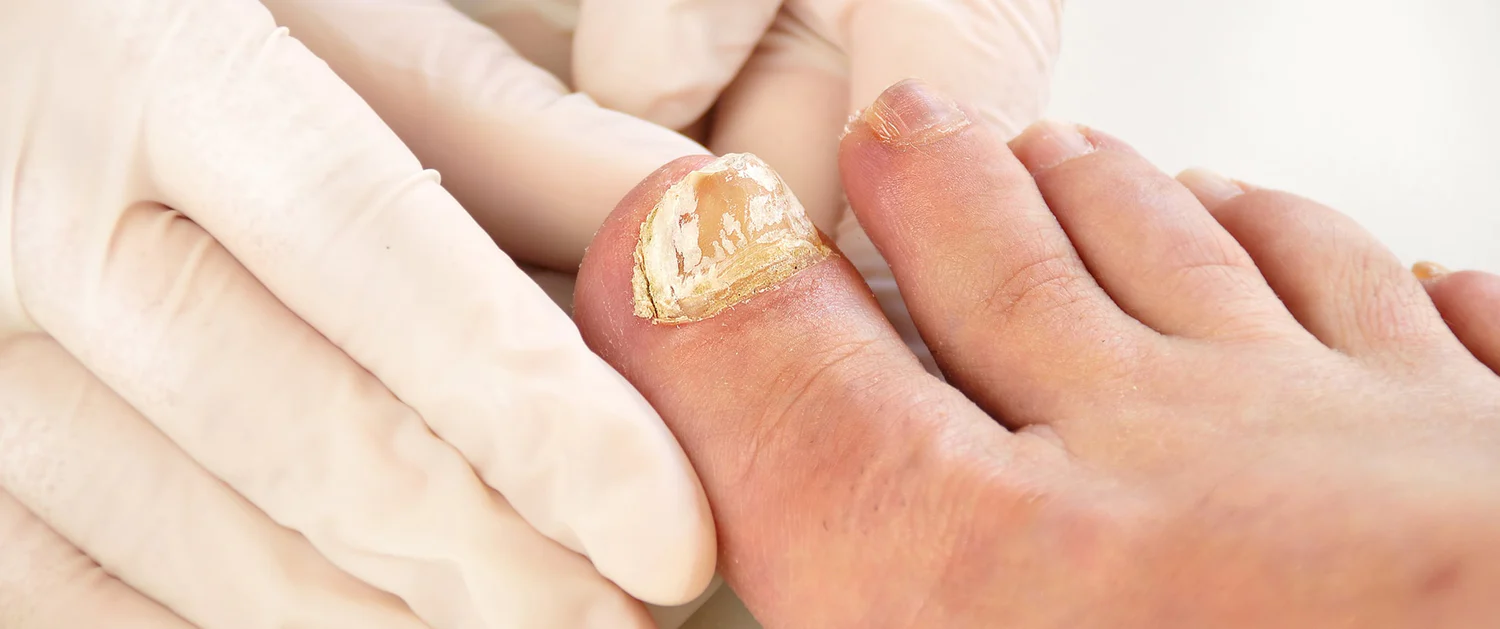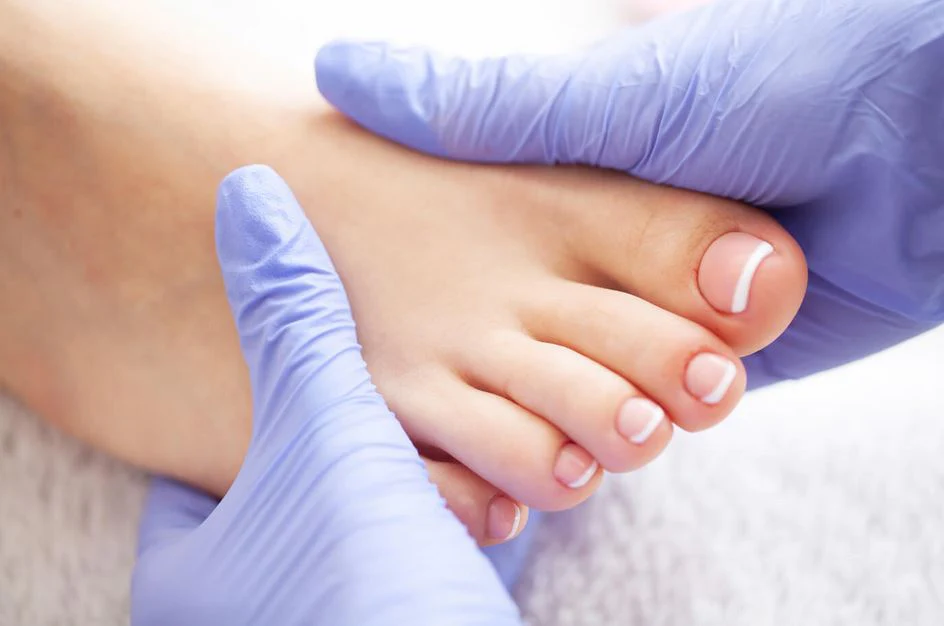Introduction
Onychomycosis, also known as nail fungus, is a widespread disease that affects millions of people in the UK and around the world. Here at Revitalise London Dermatology Clinic, we are committed to offering the most effective and efficient remedies for Nail Fungus. To better prepare you for the recovery process, we will go over the stages of healing after a nail fungus procedure in this blog post.
Part 1: Understanding Nail Fungus
What Is Nail Fungus, Exactly?
Onychomycosis, also known as nail fungus, is an infection brought on by dermatophytes, yeasts, and moulds, among other types of fungi. These micro-organisms can infect the surrounding skin as well as the nail bed and nail plate and thrive in warm, moist environments. Along with potential pain and discomfort, nail fungus symptoms frequently include nail discolouration, thickening, and brittleness.
1.2 Nail Fungus Risk Factors
The likelihood of getting nail fungus is increased by a number of factors, such as:
Age: Older people are more vulnerable to Nail Fungus because their blood flow is slower and their nails grow more slowly.
Excessive sweating: A moist environment encourages the growth of fungi.
Walking barefoot in wet public spaces: Showers, locker rooms, and swimming pools are perfect environments for the growth of Nail Fungus.
Injury to the nail: Nail Fungal infections can enter the body through nail trauma.
Skin conditions: People who already have psoriasis, eczema, or athlete's foot are more likely to get Nail Fungus.
Immune system weakness: Diseases like diabetes and HIV/AIDS can cause immune system weakness, which facilitates the spread of fungi and therefore Nail Fungus.
Part 2: Revitalise London Nail Fungus treatments
2.1 Topical Medicine
Over-the-counter creams, ointments, and nail polishes with antifungal ingredients are examples of topical treatments. These are typically employed in cases of mild to moderate nail fungus. Infections in the nail bed or severe infections, however, might not respond as well to them.
2.2.2 Oral Antifungal Drugs
Oral antifungal medications, such as terbinafine and itraconazole, are often prescribed for more severe cases of nail fungus. These drugs target the infection and encourage healthy nail growth throughout the body. Depending on the severity of the infection, the course of treatment typically lasts several months.
2.3 Laser Therapy for Nail Fungus
Laser Therapy for Nail Fungus treatments use light energy to target and kill the fungus cells without damaging the surrounding tissue. Non-invasive Nail Fungus therapies such as Laser Therapy has proven to be highly effective for Nail Fungus Removals at Revitalise London Dermatology Clinic.
2.4 Surgical Operations
In severe cases, surgery may be required to treat the underlying infection and remove the infected fungal nail. This may entail removing some or all of the nails, followed by treating the nail bed with an antifungal.
Part 3: Stages of Healing Following a Nail Fungus Procedure
Immediate Post-Procedure Care is stage one (Days 1-3)
Immediately after a treatment for nail fungus, the initial phase of recovery begins. Revitalise London Dermatology Clinic will now give you comprehensive aftercare instructions for the Nail Fungus therapy.. To encourage optimal healing and lower the risk of complications, or Nail Fungus regrowth you should strictly follow these intructions.
You might feel a little uncomfortable, swollen, or red in the first few days around the treated area. It's crucial to keep the area dry and clean while avoiding any potential contaminant sources. Ibuprofen and other over-the-counter painkillers can help you feel more comfortable. It's crucial to refrain from picking or scratching the treated nail because doing so increases the risk of infection or delays in healing.
Stage 2: Early Recovery (Days 4-14)
You'll observe alterations in the colour and texture of the treated nail as your body begins to heal. The nail itself may begin to look healthier, and the surrounding area may become less swollen and red. Continue to keep the area dry and clean during this phase.
In addition, you should refrain from immersing the treated nail in water for an extended period of time, like while taking a bath or swimming. Use a mild soap and plenty of water to rinse the area if you need to wash it. Avoid rubbing or scratching the treated nail and instead use a clean towel to pat the area dry.
Stage 3: Nail Regeneration and Growth (Weeks 2-8)
The damaged, fungus-infected nail is being replaced at this stage by fresh, healthy nail tissue. A clear, wholesome-looking nail might start to grow out of the nail bed's base. It's crucial to keep in mind that nail growth can be a gradual process, and noticeable improvement might not be apparent for several weeks or months.
Maintain good nail hygiene during this time and stay away from any activities that might lead to trauma or reinfection. Additionally, it's crucial to adhere to any specific instructions you may have received from Revitalise London Dermatology Clinic regarding the use of oral or topical antifungal medications.
Stage 4: Full Healing and Recuperation (Months 2-6)
The damaged area of your nail will gradually be replaced by healthy nail tissue as it continues to grow and regenerate. By this point, your nail's appearance and health should have significantly improved. It's crucial to keep in mind that a full recovery can take anywhere between two and six months, depending on a person's age, general health, and how severe the initial infection was.
Maintaining good nail hygiene and keeping an eye out for any signs of reinfection are imperative even after your nail has fully recovered. Regular checkups at Revitalise London Dermatology Clinic can help to guarantee that your nail is healthy and fungus-free.
Part 4: Preventing Nail Fungus - Revitalise London Nail Fungus Prevention Advice
4.1 Maintain Nail Hygiene
Trim your nails on a regular basis and keep them dry and clean. Cut your nails as short as possible to prevent ingrown toenails and other nail or skin related problems.
4.2 Wear the Correct Footwear
Put on breathable footwear and socks to keep your feet dry. Avoid wearing synthetic shoes because they can produce a moist environment that is ideal for the growth of Nail Fungus.
4.3 Prevent Wearing Bare Feet in Public
When walking in wet public spaces like locker rooms, showers, and swimming pools, wear flip-flops or shower shoes.
4.4 Maintain Dry Feet
After bathing or swimming, thoroughly dry your feet, paying close attention to the space in between your toes.
4.5 Change Socks Frequently
Change your socks at least once per day, or whenever they start to get wet, if you have sweaty feet.
4.6 Do not trade nail clippers
Shared nail clippers, files, and other nail care supplies can spread fungus infections, so refrain from doing so.
Part 5: Common Questions Regarding Nail Fungus Recovery
5.1 How long does it take for a fungal infected nail to grow back?
Although the length of time it takes for nails to grow varies from person to person, on average, fingernails take about six months and toenails up to a year to fully regrow. The rate of nail growth can be influenced by variables like age, general health, and the severity of the Nail Fungus infection.
5.2 Can I paint my nails while I'm recovering from Nail Fungus?
In order to prevent a barrier from forming that prevents the nail from "breathing" and may trap moisture that might promote Nail Fungal growth, it is best to avoid wearing nail polish during the healing process. Apply nail polish only after your nail has fully healed.
5.3 Can I work out in the gym after having a procedure for nail fungus?
You can generally continue to exercise during your recovery from Nail Fungus, but it's essential to take precautions to prevent reinfection or trauma to the treated nail. Wear breathable shoes and socks,and think about using antifungal powders or sprays in your shoes. Avoid wearing bare feet in public spaces like showers and locker rooms at the gym and be cautious when engaging in activities that could harm your nails.
Part 6: Examining the Various Nail Fungus Types
6,1 Distal Subungual Onchomycosis (DSO)
The most common type of nail fungus infection is DSO, which is typically brought on by dermatophytes. The nail becomes thickened, discoloured, and separated from the nail bed as a result of its effects on the nail bed and the underside of the nail plate. Athlete's foot, wearing tight-fitting shoes, and having a family history of DSO are risk factors for this type of Nail Fungus.
6.2 White Superficial Onychomycosis (WSO)
WSO is a less frequent type of nail fungus that affects the nail plate's surface and produces white streaks or spots. The entire nail may eventually turn white, brittle, and crumbly. WSO is frequently brought on by the fungus Trichophyton mentagrophytes and may be a quick and faster nail fungus treatment than other types of nail fungus.
6.3 Candida onychomycosis
A yeast infection that affects the nail and nearby skin is called candida onychomycosis. The nail may become thickened, discoloured, and detached from the nail bed as a result. Candida infections can affect the skin, mouth, and genitals and are more prevalent in people with compromised immune systems.
6.4 Proximal Subungual Onychomycosis (PSO)
A rare type of nail fungus known as PSO begins at the nail's base and progresses to the tip. It is more common in individuals with weakened immune systems and can cause the nail to become discoloured, thickened, and separated from the nail bed.
Part 7: Recognising Nail Fungal Symptoms Early
A faster recovery time and more effective treatment are possible with early nail fungus detection. It's critical to recognise the early indications of nail fungus and to get treatment if required.
An early sign of nail fungus may be a change in nail colour, such as white, yellow, or brown spots.
7.2 Density
A Nail Fungal infection may be indicated by an increase in nail thickness. Nail trimming can be painful and challenging for thickened nails.
7.3 Deformed Nails
When the nail is distorted or oddly shaped due to nail fungus infections, it can be difficult to wear shoes comfortably.
Brittle Nails, 7.4
The nail may become brittle and vulnerable to breaking, chipping, or cracking due to a fungal infection.
7.5 Odour
An early indication of a nail fungal infection may be a bad-smelling odour coming from the affected nail.
Consult a dermatologist or healthcare professional at Revitalise London Dermatology Clinic if you experience any of these early indications of nail fungus for a precise diagnosis and effective treatment.
Part 8: Good Nail Care While Recovering
8.1 Consistently Examine Your Nails
Check your nails frequently for any indications of reinfection, modifications to colour or texture, or any other unsettling symptoms. Be sure to schedule a follow-up appointment at Revitalise London Dermatology Clinic if you have any questions or queries.
8.2 Take Care of Your Nails
As dry, cracked nails can serve as an entry point for nail fungal infections, keep your nails and skin moisturised with a hydrating oil or cream.
A healthy diet can help your nails in general and can strengthen your immune system so it can fight off infections. Include foods like fruits, vegetables, whole grains, lean proteins, and healthy fats that are high in vitamins, minerals, and essential fatty acids.
8.3 Avoiding Nail Damage for avoiding Nail Fungus
Avoid accidental injury by being careful when trimming your nails and refrain from bad habits like picking at your cuticles or biting your nails. Such actions may result in minor injuries that can serve as a portal for nail fungus infections.
8.4 Use a Nail Strengthener
Use a nail strengthener to help your nails become more resilient if they are weak or prone to breaking. By strengthening the nail's structure, these products can lower the possibility of nail damage that could result in fungus infections.
Part 9: The Immune System's Function in Nail Fungus Recovery
9.1 The Immune System's Function in Healing
Fighting off infections, such as nail fungus, depends heavily on the immune system. Your body can identify and get rid of the fungi that are causing the infection with the aid of a strong immune response, resulting in a quicker and more complete recovery.
9.2 Factors That Impact Immune System Performance
Age, stress, poor sleep, bad nutrition, and underlying medical conditions are just a few of the variables that can influence how well your immune system operates. Maintaining a healthy lifestyle and taking care of any underlying medical conditions are crucial for ensuring the immune system is functioning at its best.
9.3 Immune System Support Techniques
The following advice can help your immune system while you recover from a nail fungus infection:
- Maintain a rich and balanced diet.
- Regular exercise will enhance your blood circulation and general health.
- Aim for 7-9 hours of sleep each night to get the rest you need.
- Utilise relaxation methods to reduce stress, such as yoga, meditation, or deep breathing exercises.
- Drink plenty of water to support overall health and to aid in the removal of toxins.
- Avoid smoking and consuming large amounts of alcohol
- Your body can fight off fungus infections more successfully and has a better chance of recovering if your immune system is supported.
Conclusion
At Revitalise London Dermatology Clinic, Nail Fungus is a popular and highly effective treatment available. You can contribute to a speedy and successful recovery by being aware of what to anticipate and following the advised aftercare recommendations. Never hesitate to get professional advice and treatment options from Revitalise London Dermatology Clinic if you think you might have a nail fungus infection or are worried about how your healing is going. Remember that you can get rid of a nail fungus infection and enjoy healthy, fungus-free nails once more with the right care and patience
